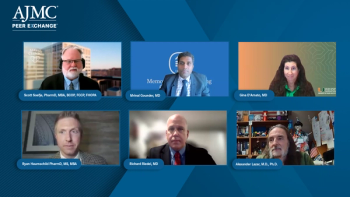
Early Timing, Optimal Conditioning Maximize Outcomes of Allo-SCT in MDSs and MPNs
A review published in Frontiers in Oncology explored the application of allo-SCT for myelodysplastic syndromes and myeloproliferative neoplasms.
MDSs and MPNs are neoplastic hematological disorders, the most common of which is chronic myelomonocytic leukemia (CMML), a type of MPN. Both disorders lack specific molecular signatures and tend to show myelodysplastic and myeloproliferative features. Thus, these conditions are complicated to treat, and there is a lack of clear treatment guidelines or effective therapies to target them.
For patients with CMML, overall survival (OS) ranges from a few months to several years after diagnosis. Although hydroxyurea has shown effectiveness against proliferative features and treatment with a hypomethylating agent can benefit patients with dysplastic features, these therapy options do not foster long-term remission or prevent disease progression to acute leukemia.
Currently, allo-SCT is the only potentially curative treatment across MDS/MPN types, but significant morbidity and mortality limit more widespread use of allo-SCT. It is typically not recommended for patients who are of an older age or who have comorbidities; but when possible, allo-SCT should be a go-to approach, the authors wrote.
“The only treatment with curative potential remains allo-SCT, which should be provided to all patients with prognostically unfavorable, rapidly evolving, or symptomatic CMML, or other MDSs/MPNs, who have an available stem cell donor,” the authors wrote. “Ideally, this should be performed early, before disease progression, because in the latter case, nonrelapse mortality and relapse rate are higher and worse than those in [acute myeloid leukemia] evolved from classical MDS.”
The authors highlight a selection of studies aiming to show the value of allo-SCT for patients who have MPNs and MDSs. A report from Mayo Clinic including 406 patients, 70 of whom underwent allo-SCT, found that median leukemia-free survival was significantly better in patients who underwent allo-SCT vs the nontransplanted cohort (40 vs 20 months). OS was also superior in the transplanted group (40 vs 21 months).
In another multicenter analysis including 261 patients, 119 of whom underwent allo-SCT, patients who underwent transplant had superior median OS (4.3 vs 2.3 years) compared with those who did not after a median follow-up of 6 years.
Several factors have been shown to have an impact on allo-SCT prognosis in patients who have CMML. Early transplantation is an important aspect of success in MPNs and MDSs, and patients’ Hematopoietic Cell Transplantation-Specific Comorbidity Index scores have also shown prognostic value in several studies. The percentage of bone marrow blasts, pre-transplant cytogenetics, pre-transplant hematocrit, and age have also been shown to impact survival.
“The most challenging decision for the treating physician concerns patients between 60 and 70 years and few fit patients older than 70 years,” the authors wrote. “For this age range, the physician needs to discriminate higher-risk features that have been well characterized and described. A disease mutational profile can greatly help in any case but particularly for patients of the seventh decade of their life.”
Helping patients achieve the best possible disease status ahead of allo-SCT is the most crucial aspect of successful implementation, the authors noted. The treatment armamentarium includes traditional therapies such as hypomethylating agents and novel options, but choosing the best strategy for each individual can be challenging.
“Establishing the most appropriate drug combinations in each individual patient is a long way, which could be delineated through the use of these combinations either as a bridging treatment before transplantation or by incorporating appropriate drugs in the preparatory conditioning regimens,” the authors wrote. “All of these potential new directions could only be substantiated through prospective multicenter randomized trials.”
Reference
Symeonidis A, Chondropoulos S, Verigou E, Lazaris V, Kourakli A, Tsirigotis P. Allogeneic hematopoietic stem cell transplantation for mixed or overlap myelodysplastic/myeloproliferative disorders. Front Oncol. Published online August 5, 2022. doi:10.3389/fonc.2022.884723
Newsletter
Stay ahead of policy, cost, and value—subscribe to AJMC for expert insights at the intersection of clinical care and health economics.








































